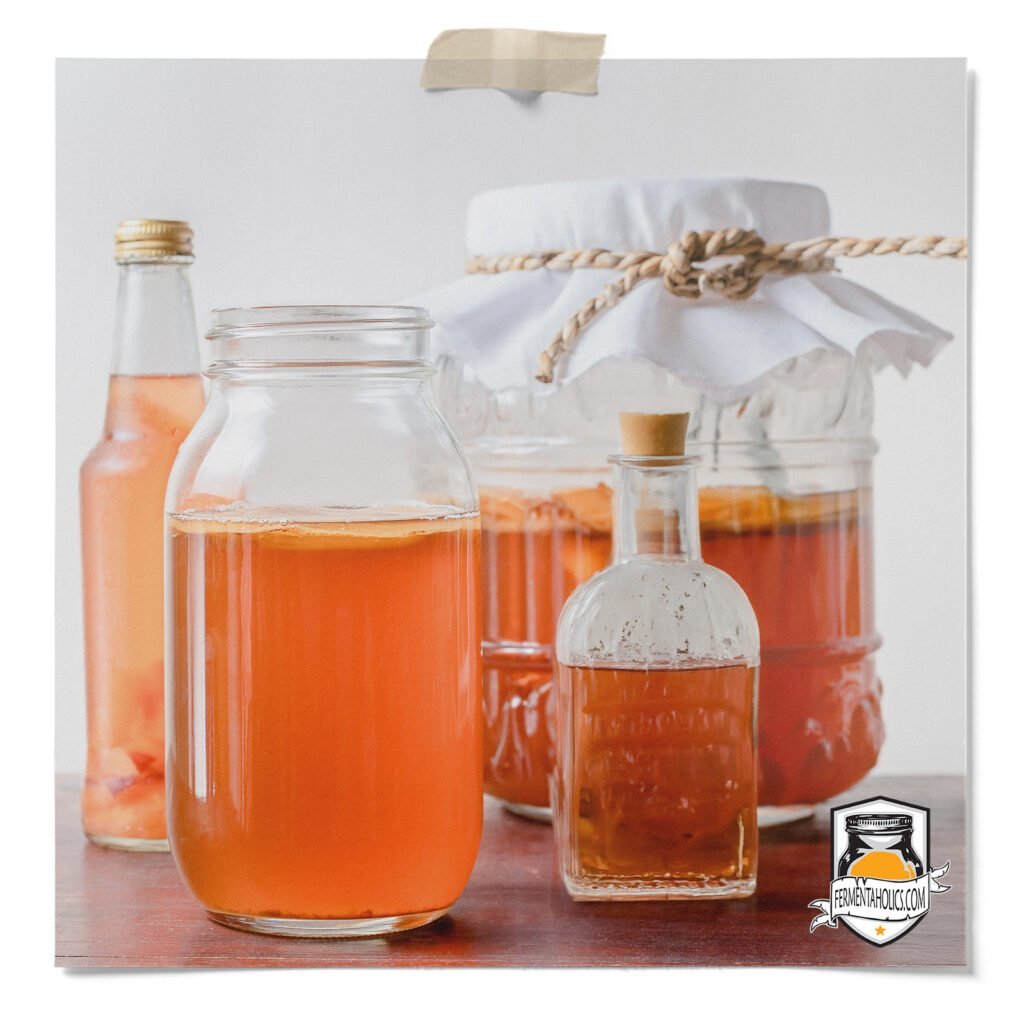
The fermentation of kombucha closely resembles that of vinegar fermentation. First, the yeast convert sugar to alcohol, then, the bacteria convert alcohol to organic acids. While there are differences in the chemical composition and fermentation process between kombucha and vinegar, the general concept behind the two fold symbiotic fermentation of yeast and bacteria mirror one another.

The vinegar taste comes from the production of organic acids during the conversion of alcohol by bacteria. As these acids are synthesized, the kombucha becomes more acidic, lending to a harsher, more bitter flavor as the ferment progresses.
There are three main organic acids formed during kombucha fermentation: acetic, glucuronic, and gluconic.
The defining acid in vinegar and the most abundant of acids in kombucha is acetic acid. It is derived from ethanol and is how it’s earned its other name, ethanoic acid.
Formed from glucose, glucuronic acid is a key building block for many of our bodily functions and is also important for the metabolic pathways for all living things.
Also derived from glucose, gluconic acid is present in kombucha and also found naturally in honey, wine, & fruit. Its presence in our gut helps support the vitality of our microbiome.
Vinegar is by definition >4% by volume acetic acid. During the traditional brewing of kombucha, the natural limiting alcohol production doesn’t allow enough alcohol for the bacteria to convert.
For kombucha to become kombucha vinegar there is an additional fermentation process to raise the alcohol content higher than the kombucha culture could do on its own.
Yes! The vinegary flavor starts off weak in the beginning of the brew due to a small percentage of inoculum, about 10%. As the tea ferments, the organic acid production increases but does so steadily. You can monitor your kombucha by tasting it daily and deciding when the flavor balance is just right for you.
If you’ve happened to allow your kombucha to ferment too long and find it hard to drink, there’s still ways to use it up!
Here are a few ideas:
As you can see there are many different ideas of how to use over fermented kombucha and you can be as creative as you want to avoid tossing your beloved but over-soured brew.
